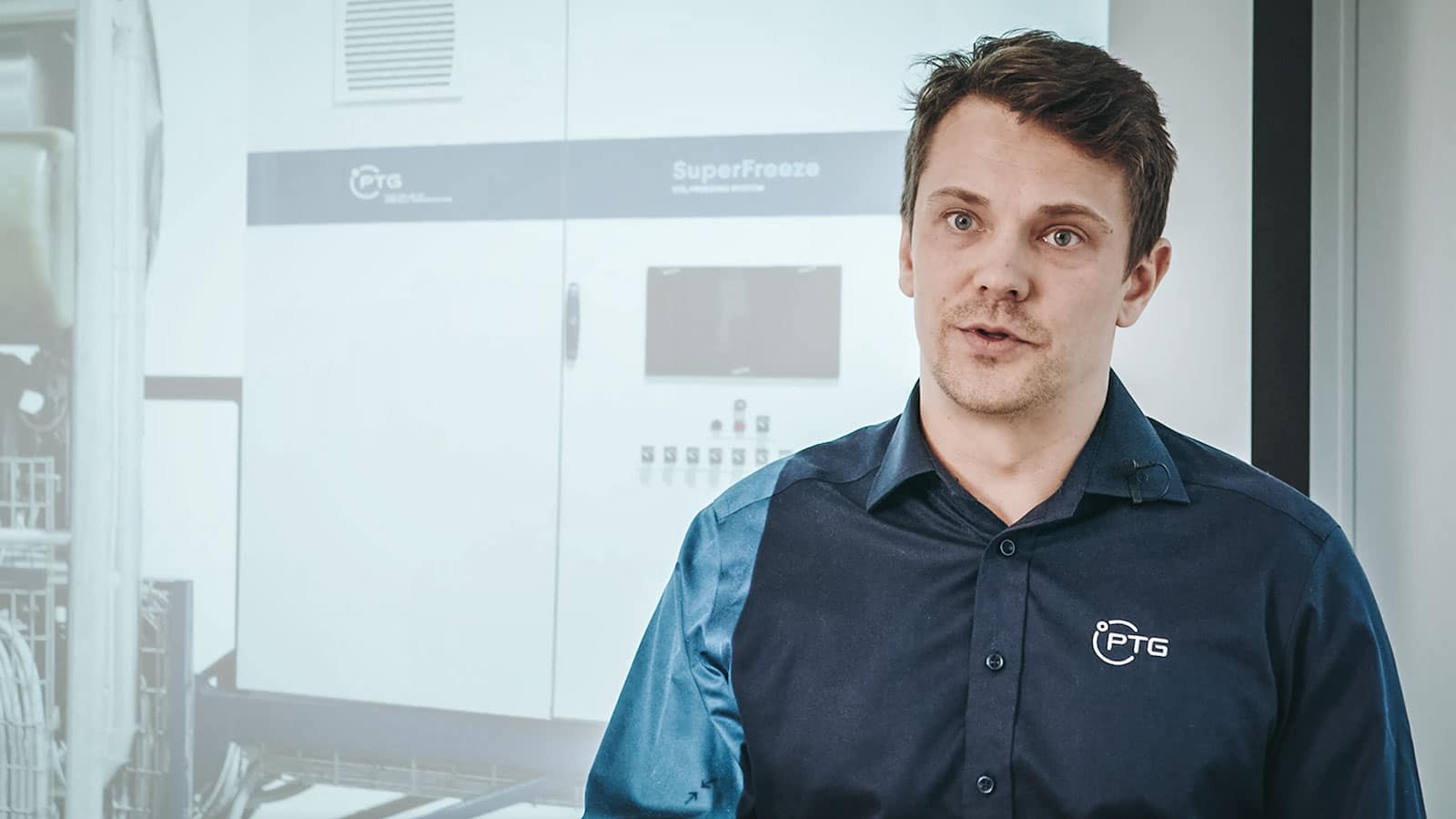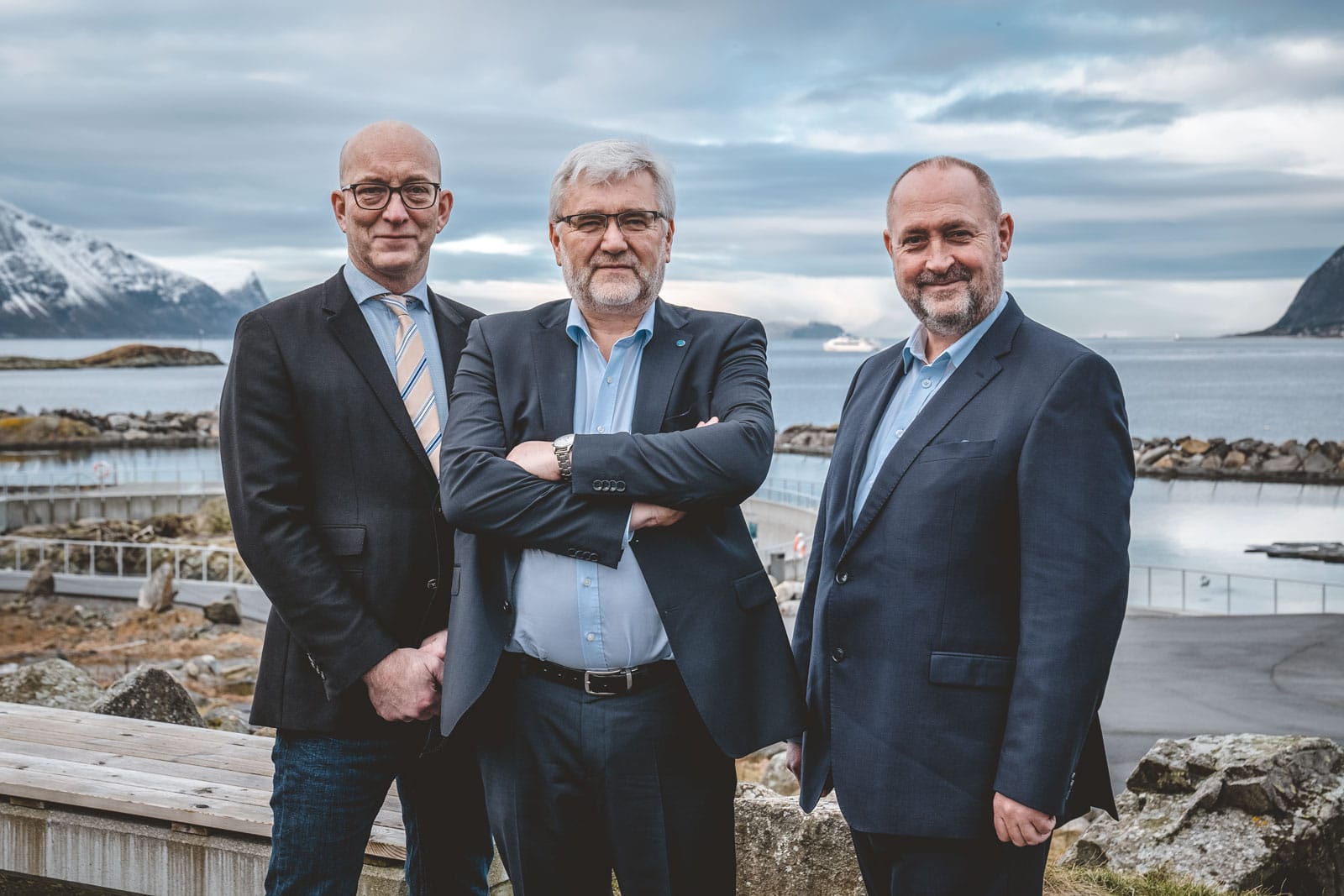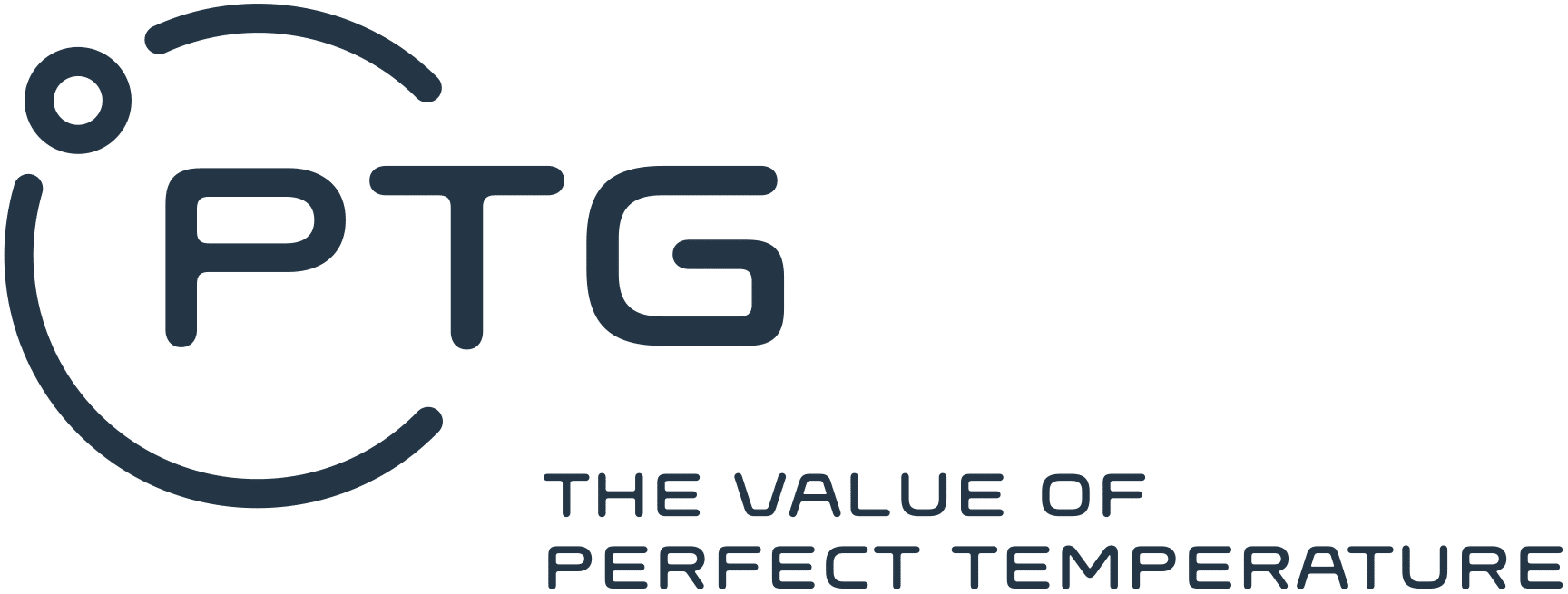– “Our solutions will contribute to better quality and reduce wastage throughout the refrigeration chain,” says Roy Arild Fjellstad, sales manager for marine and industry at PTG. “Utilising natural refrigerants and reducing energy consumption mean that our systems also contribute to a better climate and improved profitability.”

Refrigeration solutions
Bluewild has made a strong commitment to good fish welfare and high quality standards for the raw material. The cooling and freezing solutions on board play a key role in the value chain.
PTG is collaborating with four of the other suppliers, and its delivery includes ensuring a perfect temperature with minimal energy consumption for the shipboard refrigerated seawater (RSW) plant, plate freezers, individually quick-frozen (IQF) freezers and the freezing plant. Freezing capacity will be 65 tonnes per day, including 25 in the IQF freezers and 40 in the plate freezers.
SeaCo2ol RSW
“We ensure that the good quality of the catch is preserved by starting the cooling process as soon as the fish have been bled,” explains Fjellstad. “Our SeaCo2ol RSW plant cools seawater in the cooling pipes, and also delivers refrigerated seawater to the factory to avoid the fish being warmed up by the process.”
Live fish are conducted from the trawler through a piping system below the waterline to water-filled reception tanks. They are restituted there and kept alive before being electrically stunned and bled, and are then sent on through cooling pipes to reduce their temperature and speed up freezing.
SuperFreeze
The fish is kept cooled throughout the process and quickly frozen to ‑35°C with the SuperFreeze system after being processed in the shipboard factory. IQF freezers ensure that each fillet is rapidly frozen. Residual raw materials will also be conserved in the best possible way and frozen in the plate freezers with automatic bottom emptying.
“Quick freezing and low-temperature freezer storage will allow Bluewild to preserve the good and fresh quality of the fish from the time it is hauled on board until it lies on the consumer’s plate,” says Fjellstad.
Freezing fish quickly means the ice crystals which form are smaller than if they are frozen slowly. Large crystals damage the cells and tissue fibres. Rapid freezing to low temperatures thereby reduces cell disruption during the freezing process and in thawing.
Natural refrigerants
Both the SeaCo2ol RSW and SuperFreeze plants use CO2 as a natural refrigerant, notes Fjellstad. “CO2 is a natural, robust, well-tested and environment-friendly refrigerant, both at industrial plants ashore and on fishing vessels.”
Energy-economic
“Where energy optimisation is concerned, this new system allows us to adjust freezer capacity at all times to match requirements,” he adds, “Heat recovery from the CO2 plant is also very beneficial. Our systems thereby help to reduce total energy and fuel consumption on board.
“The technology is environment-friendly, enhances energy efficiency, and not least contributes to a substantial improvement in catch quality.”


